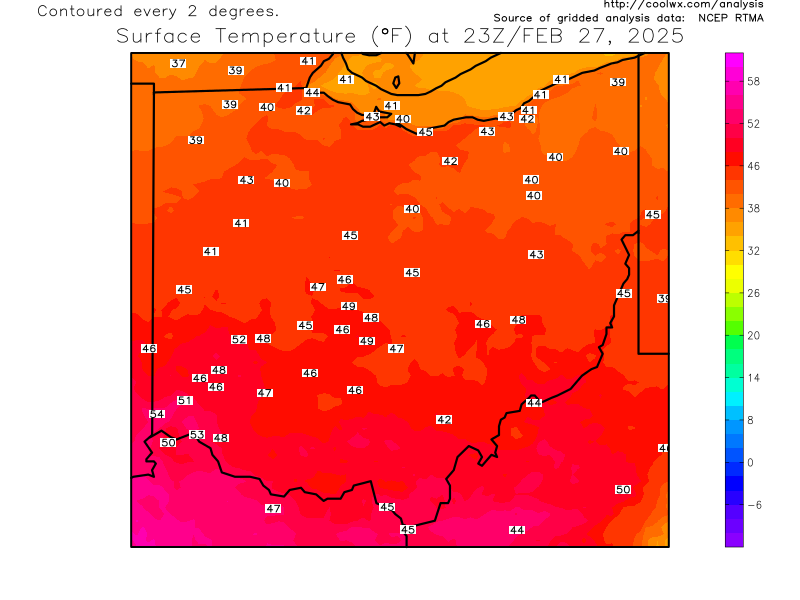A pretty big weather day yesterday across northern Ohio. Many severe storms with heavy rainfall (2-5"), 1" hail reported & tornado warnings.
Many people have complained about our "wall-to-wall" coverage saying that nothing was happening and it wasn't worth it. "No tornadoes on the ground so what is the point of coverage like this?" a few said via Facebook and Twitter. While its easy to lump this event in with all of the others, this round of severe storm was very different than other severe weather events we've had in the recent past in northern Ohio. Why? First, many of the severe cells had the classic hook echo characteristic indicating strong counter clockwise winds which often indicate a tornado. Thankfully, only ONE TORNADO was confirmed in Lorain County. I thought we'd end up with 4 or 5 easily.

Secondly, many cells also had strong changes in wind direction embedded within them. By using the "Velocity Scan", we can determine which cells have rotational signatures by recognizing those small scale wind direction changes. Green colors mean wind moving toward the radar. Red colors mean wind is moving away. Notice the abrupt change and the implied rotation.
For these reasons, the National Weather Service issued tornado warnings. As a public service, it is mandatory to inform the public of the tornado warnings. Given the numerous storms, we needed to break into programming to cover this event BIG TIME!
For those of you who claim that more tornado warnings are being issued for northern Ohio, that's not the case. After doing some exhausting research compiling tornado warning history, I found that the issuance of tornado warnings at the National Weather Service office in
Cleveland, Ohio (our home office) is trending lower since the early 1990s. Also, the percentage of tornado warnings that result in actual tornadoes here in northern Ohio during the same period is comparable to the national average.
=======================================================================
As we recap yesterday's severe weather, its a good idea to review what constitutes a severe thunderstorm as defined by the National Weather Service.
Most storms NEVER reach severe limits. A very small number of severe storms actually produce a tornado. That's comforting news for all of us. That said, the mere mention of the word "severe" has extreme connotations. Many people believe that the word "severe" means "tornado". Nothing could be further from the truth. Here are the tornado facts and figures that I hope set the record straight.
* 5% of storms are severe. Only 1% of storms produce tornadoes
* Tornado warnings are issued for about 75% of all tornadoes
* Tornadoes occur over a wide
spectrum of strengths, sizes, and lifetimes.
Of the 800–1400 tornadoes reported in the United States each year, about
86% can be characterized as weak, 13% as strong, and 1% as violent.
* In general, weak tornadoes (86%) have lifetimes
less than 10 min, widths around 100 m (yards) and paths less than 1.6 km (1
mile) in length. National Weather Service radars can complete ONE SCAN every 4 to 6 minutes!
* Typical tornadic wind
speeds are on the order 110 mph.
* The average “lead time” for tornado
warnings was less than 5 min in the late 1980s. By the late 1990s, lead time was up to 10 minutes; 13 minutes today (2014)
* National Weather Service forecasters
provided a 24-minute lead time for tornado warnings in Joplin, Missouri back in 2011, almost
TWICE the national average.
* According to one study in 1978, there was a 22%
probability of tornado detection with a 3 minute warning lead time. By 1998,
the probability had jumped to 65%!
































